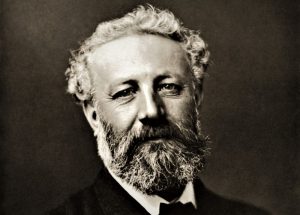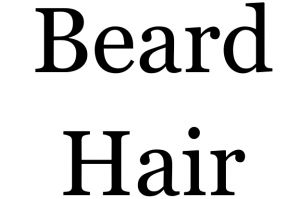Hyperbaton
In the field of rhetoric, there are many literary figures that allow us to express our ideas and feelings as well as to construct our literary discourse. The hyperbaton is one of those literary figures of the diction rhetoric commonly used in poetry to generate a certain intensity, beauty, intrigue or depth in language, altering its usual order in a sentence.
What is hyperbaton?
The hyperbaton is a rhetorical figure of diction that alters the syntactic or logical order of a sentence. This literary resource is most often used in the lyric genre to produce the proper metric in the verses of a poem. It can be classified into four types: tmesis, parenthesis, anastrophe and hysterology.
In poetry, the hyperbaton is commonly used to adjust the verse metric, to get the rhyme or to get a synalepha in the verses.
Hyperbaton is often used to imitate the Latin narrative, epic form or give a romantic touch to the message. In some Eastern countries, such as China or Japan, the great sages use this rhetorical figure to infuse wisdom into their message.
Etymology
The word hyperbaton is of Greek origin which means transposition. It is formed by the prefix hyper that means on or above and the verb baino that in the Greek language means to go or to walk. In this sense, the word hyperbaton means “to go over the order”.
Characteristics of hyperbaton
Among the most significant characteristics the following can be mentioned:
- It is a rhetorical figure of speech.
- It alters the logical order of the words in a sentence.
- It generates interest in the reader and focuses on words to highlight the inner part of a message.
- It is a resource used in poetry to adjust the metrics of verses.
- It destroys the syntactic order of a sentence.
- Tends to confuse at first reading.
- It can be given in four forms: tmesis, parenthesis, anastrophe and hysterology.
Types of hyperbaton
There are four types of hyperbaton: tmesis, parenthesis, anastrophe and hysterology.
Tmesis occurs when a word is interspersed between two elements of another compound word. Example: “Elegant you speak mind”. The logical order of this phrase would be: You speak elegantly.
The parenthesis is generated when an interjection or sentence with different intonation is introduced in a sentence. Example: “and declaring myself mute (because there are sorrows and anguish that affections say much better than the mouth), I said my sorrows quietly” Calderón de la Barca. The logical structure of these phrases would be: the affections say much better the sorrows and anguish… and… in silence I said my sorrows…)
Anastrophe consists of postponing the preposition to the noun that must be present. Example: “No one should not use or want women’s love”. The logical order of this sentence would be: No one should use or want the love of women.
Hysterology occurs when the order of words is altered by placing the first words at the end and the final ones at the beginning. Example: “Let’s die and fall in the middle of the weapons! The logical structure of this sentence would be: In the midst of arms let us die and fall.
Uses
Generally the hyperbaton is used for:
- Give the text greater beauty and elegance.
- Adapt the rhyme of the verse.
- When the composition of sentences has a syntax similar to the Latin ones.
- To highlight or emphasize the meaning of an element that has been placed in the sentence.
Examples of hyperbaton
The following are different examples of the use of hyperbaton in everyday language and poetry.
Example 1
“If I remember correctly.”
It is very common to hear this phrase in everyday language and as you can see, the logical order of the phrase is reversed, which should be: If I remember correctly.
Example 2
“To God begging”
This phrase is very common to hear in the street. As you can see the syntactic order is altered, as it should be: Praying to God.
Example 3
“The fear of loss a path to the dark side is…”
This is a classic phrase said by the character of Master Yoda from the movie Star Wars. The figure of the hyperbaton is very present when altering the logical order of the sentence and its intention is to give this character the image of a sage. This should be it: One way to the dark side is the fear of loss.
Example 4
“From the room in the dark angle
of its owner perhaps forgotten
silent and covered with dust
see the harp.”
Gustavo Adolfo Becquer, Rimes VII
The figure of the hyperbaton can be easily identified in these Becquer verses by changing the logical order of the words that make up the verses and generate in the reader the sensation of loneliness, darkness and oblivion. A logical order to this fragment of the poem would be: The harp was covered with dust and silent, forgotten by its owner in the dark corner of the room.
Example 5
“With such gentleness the crystalline
Tajo in that part walked
that the eyes could see the way
to determine just what he was wearing.”
Garcilaso de la Vega, Eclogue III
In this poem by Garcilaso de la Vega, the hyperbaton is a tool that facilitates the metric of verses and generates the emotional charge of the poem. If we analyze the logical order of text, it should be: The crystalline Tagus walked in that part with such gentleness that the eyes could barely determine the path he was taking.
Example 6
“Steps of a pilgrim are, wandering,
how many sweet verses Musa dictated to me
in confused solitude,
some lost, others inspired.”
Luis de Góngora, Soledades
In this poem by Luis de Góngora, one can observe the use of the hyperbaton and how this rhetorical figure favors the metric of the poem and it is used to transmit its emotional charge. A logical order that could be given to this text could be: The steps of a pilgrim are wandering, sweet Muse dictated how many verses in confused solitude, one lost and others inspired.
How to cite this article?
Briceño V., Gabriela. (2019). Hyperbaton. Recovered on 24 February, 2024, de Euston96: https://www.euston96.com/en/hyperbaton/










